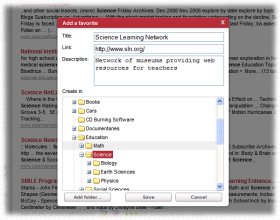|
Education
Web
Viewing 1-1 of 1 total results
slate of officers from a class (e.g., if there are 23 students and 3 officers, the number is 23 x 22 x 21) 3. List the possible combinations of two elements chosen from a given set (e.g., forming a committee of two from a group of 12 students, finding how many handshakes...
1
0
slate of officers from a class (e.g., if there are 23 students and 3 officers, the number is 23 x 22 x 21) 3. List the possible combinations of two elements chosen from a given set (e.g., forming a committee of two from a group of 12 students, finding how many handshakes there will be among ten people if everyone shakes each other person’s hand once). 4.4.6 D. Discrete Mathematics—Vertex-Edge Graphs and Algorithms 1. Devise strategies for winning simple games (e.g., start with two piles of objects
18
0
http://www.nj.gov/education/cccs/2004/s4_math.pdf#page=18
www.nj.gov/education/cccs/2004/s4_math.pdf#page=18
dimensional shapes. • Vertex, <span class="highlight">edge</span>, <span class="highlight">face</span>, side • 3D figures – cube, rectangular prism, sphere, cone, cylinder, and pyramid • 2D figures – square, rectangle, circle, triangle • Relationships between three- and two-dimensional shapes (i.e., the <span class="highlight">face</span> <span class="highlight">of</span> a 3D shape is a 2D shape) 3. Describe, identify and create instances <span class="highlight">of</span> line symmetry. 4. Recognize, describe, extend and create designs and patterns with geometric objects <span class="highlight">of</span> different shapes and colors. 4.2.2 B. Transforming Shapes 1. Use simple shapes to
36
0
http://www.nj.gov/education/cccs/2004/s4_math.pdf#page=36
www.nj.gov/education/cccs/2004/s4_math.pdf#page=36
mathematical perspectives on everyday phenomena and with important examples <span class="highlight">of</span> how mathematics is used in the modern world. Two important areas <span class="highlight">of</span> discrete mathematics are addressed in this standard; a third area, iteration and recursion, is addressed in Standard 4.3 (Patterns and Algebra). Data <span class="highlight">Analysis</span> (or Statistics). In today’s <span class="highlight">information</span>-based world, students need to be able to read, understand, and interpret data in order to make informed decisions. In the early grades, students should be involved in
38
0
http://www.nj.gov/education/cccs/2004/s4_math.pdf#page=38
www.nj.gov/education/cccs/2004/s4_math.pdf#page=38
describe practical sets <span class="highlight">of</span> directions (e.g., to add two 2-digit numbers). 2. Explore vertex-<span class="highlight">edge</span> graphs • Vertex, <span class="highlight">edge</span> • Path 3. Find the smallest number <span class="highlight">of</span> colors needed to color a map. Building upon knowledge and skills gained in preceding grades, by the end <span class="highlight">of</span> Grade 4, students will: 4.4.4 A. Data <span class="highlight">Analysis</span> 1. Collect, generate, organize, and display data in response to questions, claims, or curiosity. • Data collected from the school environment 2. Read, interpret, construct, analyze
39
0
http://www.nj.gov/education/cccs/2004/s4_math.pdf#page=39
www.nj.gov/education/cccs/2004/s4_math.pdf#page=39
as shape or color, and relationships. • Venn diagrams • Numerical and alphabetical order 2. Represent all possibilities <span class="highlight">for</span> a simple counting situation in an organized way and draw conclusions from this representation. • Organized lists, charts, tree diagrams • Dividing into categories (e.g., to find the total number <span class="highlight">of</span> rectangles in a grid, find the number <span class="highlight">of</span> rectangles <span class="highlight">of</span> each size and add the results) 4.4.4 D. Discrete Mathematics—Vertex-<span class="highlight">Edge</span> Graphs and Algorithms 1. Follow, devise, and
40
0
http://www.nj.gov/education/cccs/2004/s4_math.pdf#page=40
www.nj.gov/education/cccs/2004/s4_math.pdf#page=40
shirts and 4 skirts). 4.4.5 D. Discrete Mathematics—Vertex-<span class="highlight">Edge</span> Graphs and Algorithms 1. Devise strategies <span class="highlight">for</span> winning simple games (e.g., start with two piles <span class="highlight">of</span> objects, each <span class="highlight">of</span> two players in turn removes any number <span class="highlight">of</span> objects from a single pile, and the person to take the last group <span class="highlight">of</span> objects wins) and express those strategies as sets <span class="highlight">of</span> directions. Building upon knowledge and skills gained in preceding grades, by the end <span class="highlight">of</span> Grade 6, students will: 4.4.6 A. Data <span class="highlight">Analysis</span> 1. Collect
41
0
http://www.nj.gov/education/cccs/2004/s4_math.pdf#page=41
www.nj.gov/education/cccs/2004/s4_math.pdf#page=41
slate <span class="highlight">of</span> officers from a class (e.g., if there are 23 students and 3 officers, the number is 23 x 22 x 21) 3. List the possible combinations <span class="highlight">of</span> two elements chosen from a given set (e.g., forming a committee <span class="highlight">of</span> two from a group <span class="highlight">of</span> 12 students, finding how many handshakes there will be among ten people if everyone shakes each other person’s hand once). 4.4.6 D. Discrete Mathematics—Vertex-<span class="highlight">Edge</span> Graphs and Algorithms 1. Devise strategies <span class="highlight">for</span> winning simple games (e.g., start with two piles <span class="highlight">of</span> objects
42
0
http://www.nj.gov/education/cccs/2004/s4_math.pdf#page=42
www.nj.gov/education/cccs/2004/s4_math.pdf#page=42
shortest network connecting specified sites • Finding the shortest route on a map from one site to another • Finding the shortest circuit on a map that makes a tour <span class="highlight">of</span> specified sites Building upon knowledge and skills gained in preceding grades, by the end <span class="highlight">of</span> Grade 8, students will: 4.4.8 A. Data <span class="highlight">Analysis</span> 1. Select and use appropriate representations <span class="highlight">for</span> sets <span class="highlight">of</span> data, and measures <span class="highlight">of</span> central tendency (mean, median, and mode). • Type <span class="highlight">of</span> display most appropriate <span class="highlight">for</span> given data • Box-and-whisker plot
44
0
http://www.nj.gov/education/cccs/2004/s4_math.pdf#page=44
www.nj.gov/education/cccs/2004/s4_math.pdf#page=44
represent and solve practical problems. • Circuits that include every <span class="highlight">edge</span> in a graph • Circuits that include every vertex in a graph • Scheduling problems (e.g., when project meetings should be scheduled to avoid conflicts) using graph coloring • Applications to science (e.g., who-eats-whom graphs, genetic trees, molecular structures) 2. Explore strategies <span class="highlight">for</span> making fair decisions. • Combining individual preferences into a group decision (e.g., determining winner <span class="highlight">of</span> an election or selection process
|
